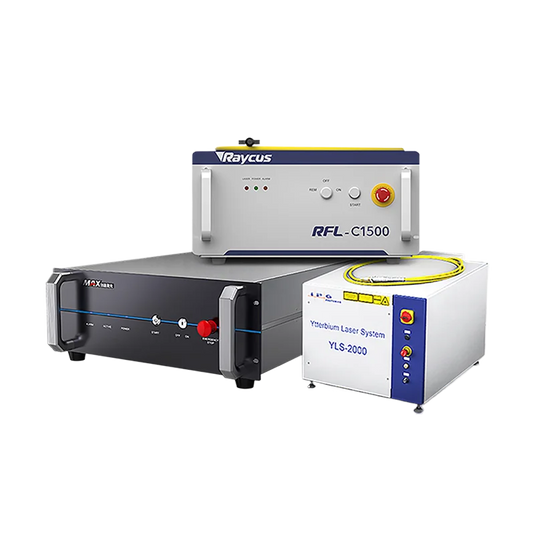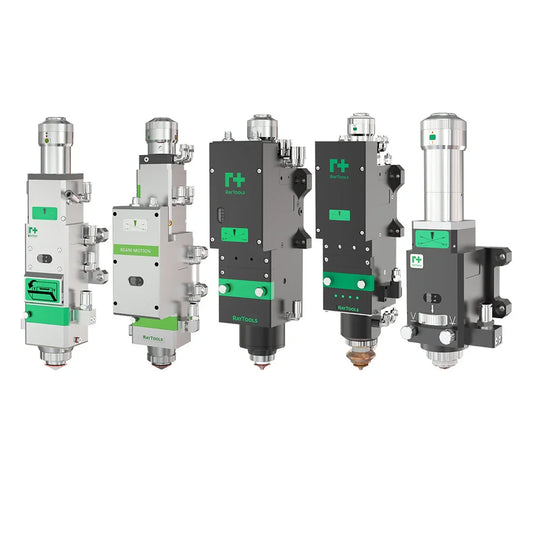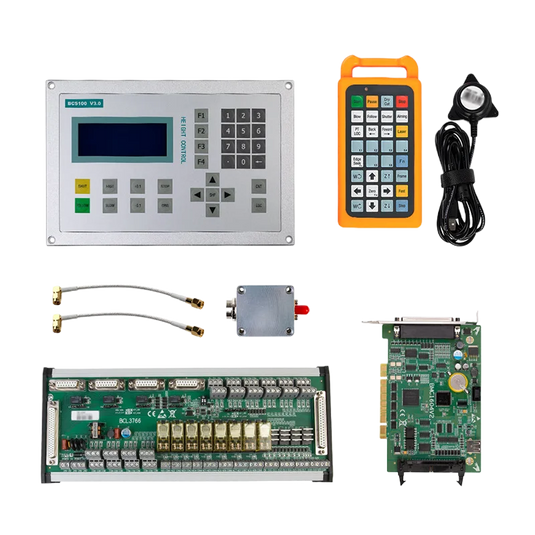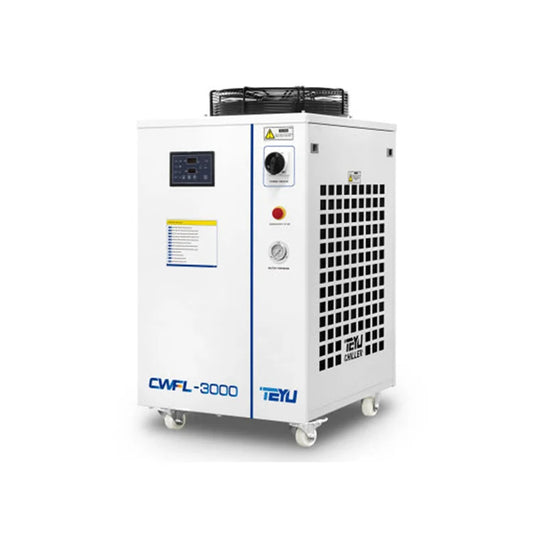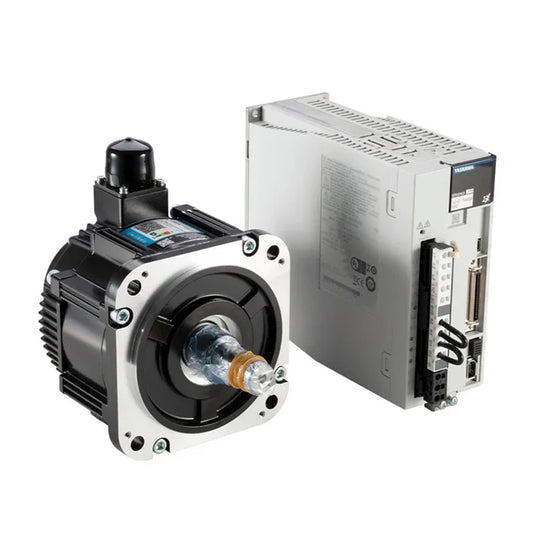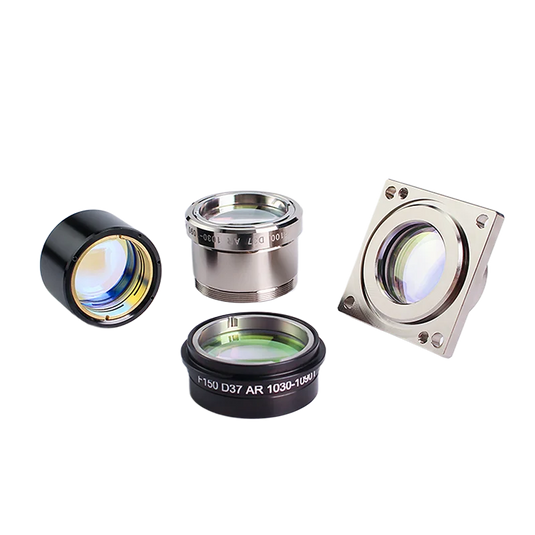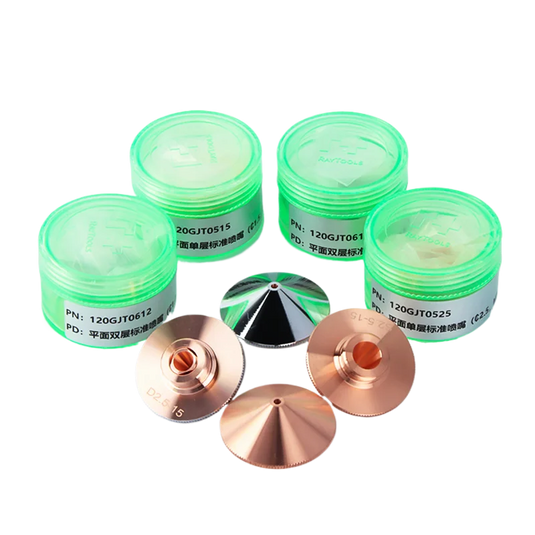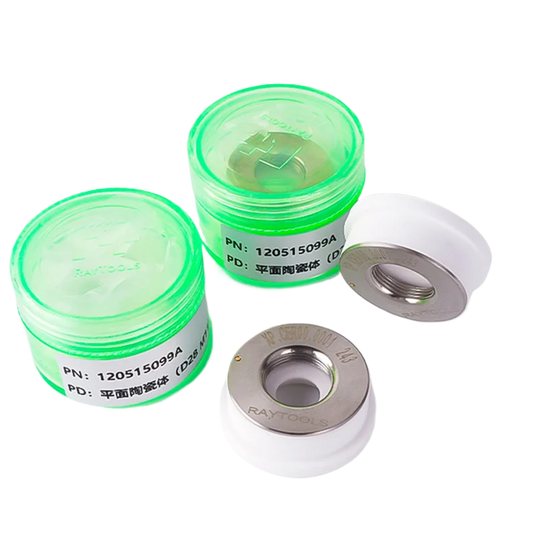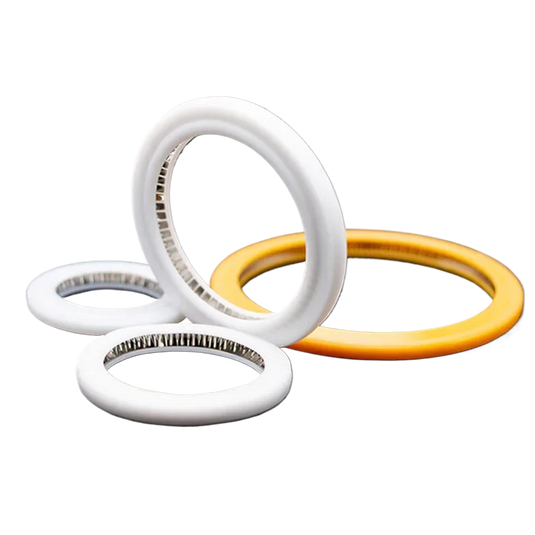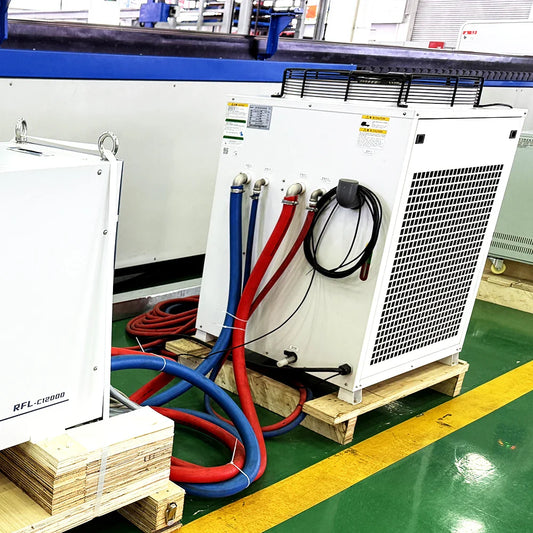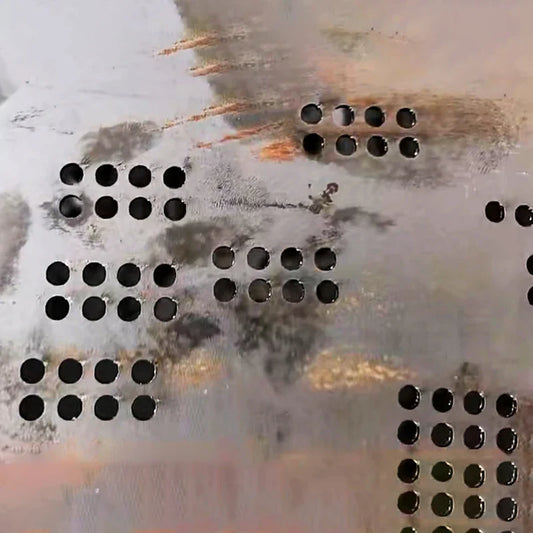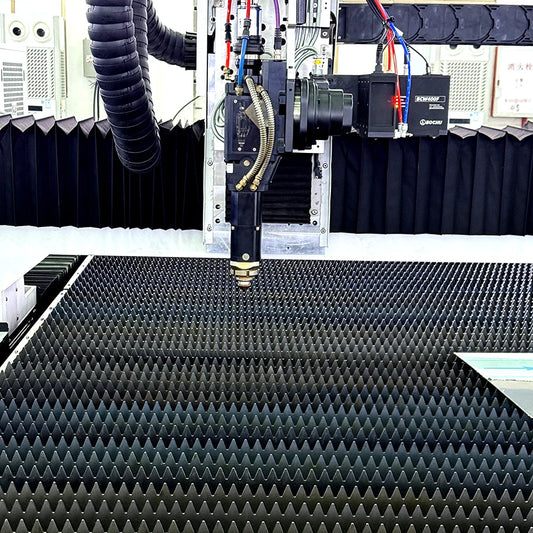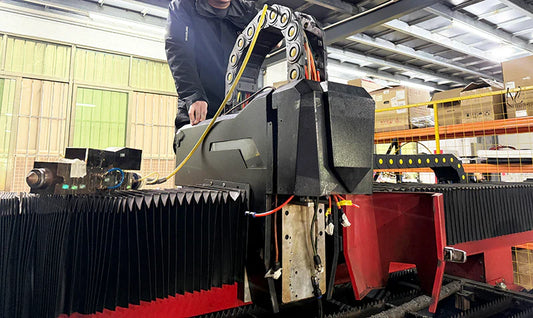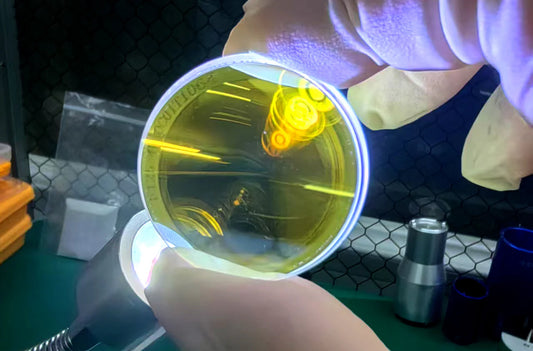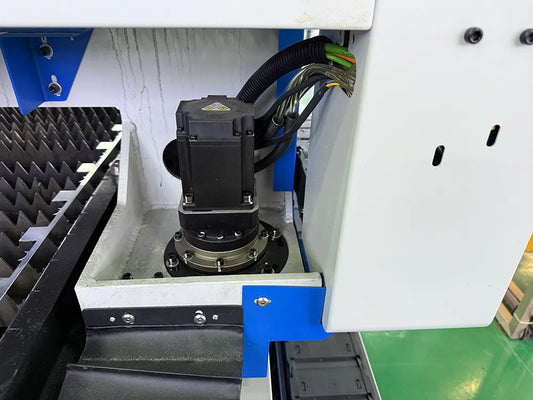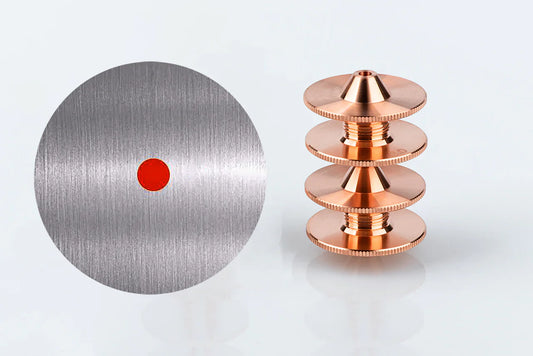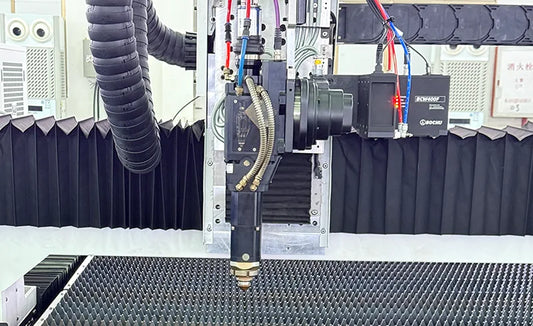Laser Cleaning for Oil & Grease: Industrial Decontamination Guide
I. Introduction
1.1 Background
With the rapid development of industry, the requirements for the cleanliness of material surfaces are increasing. Among the many cleaning needs, the removal of grease and stubborn pollutants has become a key issue. Traditional cleaning methods, such as chemical cleaning and mechanical cleaning, have many disadvantages. Chemical cleaning uses a large amount of chemical agents, which not only causes serious pollution to the environment, but also may leave residual chemicals that affect subsequent processes; mechanical cleaning is easy to damage the surface of the object being cleaned, and is less suitable for precision parts or materials with special surface requirements.
Laser cleaning technology, as an emerging cleaning method, has gradually emerged. It uses the interaction between high-energy laser beams and the surface of the object being cleaned, so that surface pollutants absorb laser energy and quickly heat up, vaporize, evaporate, or undergo pyrolysis, combustion and other physical and chemical reactions, thereby achieving the purpose of cleaning. This technology has significant advantages such as high efficiency, environmental protection, non-contact, and high precision, and has shown great application potential in many fields, such as aerospace, automobile manufacturing, electronic chip manufacturing, and cultural relics protection. Studying the application of laser cleaning technology in removing grease and stubborn pollutants has important practical significance for promoting the upgrading of industrial cleaning technology, improving product quality, and promoting the development of environmental protection industry. This article will deeply explore the application effect, mechanism of action and influencing factors of laser cleaning technology in removing grease and stubborn pollutants.
1.2 Development History
As early as the 1980s, the semiconductor industry's high requirements for the cleaning technology of contaminated particles on the surface of silicon wafer masks prompted the rapid development of research and application of laser cleaning technology. In 1987, the first patent application for laser cleaning appeared. After entering the 1990s, laser cleaning technology was successfully applied to semiconductor manufacturing processes to remove microparticles on the surface of masks. Since then, it has also been widely used in the fields of aircraft fuselage paint stripping, mold surface degreasing, engine internal carbon deposition, and pre-welding joint surface cleaning. Many internationally renowned scientific research institutions and companies, such as TRUMPF in Germany and Coherent in the United States, are in a leading position in the research and development of laser cleaning technology and equipment manufacturing, and continue to launch high-performance laser cleaning equipment, which has been widely used in actual production.

2. What is laser cleaning?
2.1 Principle of laser cleaning
Laser cleaning removes grease and stubborn pollutants mainly based on photothermal, photochemical and photomechanical effects. When a high-energy laser beam is irradiated on the surface of an object with grease and stubborn pollutants attached, the pollutants will quickly absorb the laser energy. Due to the high concentration of laser energy, the energy absorbed by the pollutants causes the temperature to rise sharply in a very short time. After reaching the vaporization temperature, the grease and stubborn pollutants directly change from solid or liquid to gas, realize vaporization and evaporation, and thus leave the surface of the object. For example, in the cleaning of automobile engine parts, stubborn pollutants such as oil and carbon deposits accumulated inside the engine, under the irradiation of laser, the organic molecules in the oil absorb the laser energy, the molecular bonds break, and pyrolysis, combustion and other reactions occur, decomposing into small molecular gases to escape, and the carbon deposits quickly sublimate at high temperature to achieve the purpose of cleaning.
Photochemical reactions may also occur between laser photons and pollutant molecules. For some grease and stubborn pollutants with specific chemical bond structures, the energy of laser photons can break these chemical bonds, decompose the pollutant molecules into smaller, more volatile or soluble substances, and then remove them from the surface of the object. In the field of cultural relics protection, when cleaning stubborn pollutants such as rust on the surface of ancient metal cultural relics, the photochemical action of the laser can reduce the metal oxides in the rust to metal elements without damaging the matrix of the cultural relics, or convert them into substances soluble in water or other solvents, and then remove them through subsequent simple cleaning steps.
When the laser pulse acts on the surface of an object, it will also produce a strong photomechanical effect. After the pollutant absorbs the laser energy, it expands rapidly, and the shock wave generated will cause the pollutant to peel off the surface of the object. This effect is similar to the impact force generated by an explosion, which can effectively remove stubborn pollutants that are tightly bound to the surface of the object. In mold cleaning, pollutants such as oil and release agents that have accumulated on the mold surface for a long time can be quickly and thoroughly removed under the action of the shock wave generated by the laser, restoring the smoothness of the mold surface and improving the service life of the mold and product quality.

2.2 Common methods of laser cleaning
Laser dry cleaning: This is the most basic laser cleaning method, which uses pulsed laser direct radiation to remove contaminants. It uses the high energy density of the laser to make the contaminants absorb energy instantly, undergo vaporization, pyrolysis or combustion reactions, and directly remove them from the surface of the object. This method is simple to operate and does not require the addition of other auxiliary substances. It is suitable for situations where high surface accuracy requirements are required, the contaminants are relatively thin and easy to absorb laser energy, such as the cleaning of tiny particle contaminants on the surface of electronic chips. It can accurately remove contaminants without damaging the chip circuit and ensure the normal performance of the chip.
Laser + liquid film method: First, a layer of liquid film is deposited on the surface of the substrate, and then laser radiation is used for decontamination. The role of the liquid film is to enhance the interaction between the laser and the contaminant and improve the cleaning efficiency. When the laser is irradiated, the liquid film quickly absorbs the laser energy, undergoes violent vaporization and expansion, generates a strong shock wave, and peels the contaminant off the surface of the object. At the same time, the liquid film can also play a role in cooling the surface of the substrate and reducing the thermal damage of the laser to the substrate. This method is often used to clean some objects with rough surfaces and strong binding force between pollutants and substrates, such as oil and rust cleaning on the surface of metal plates. Through the auxiliary effect of liquid film, stubborn pollutants can be removed more effectively and the surface of metal plates can be restored to smoothness.
Laser + inert gas method: While laser irradiation, inert gas is blown to the surface of the substrate. When the dirt is peeled off the surface, it will be blown away from the surface by the gas immediately to avoid re-contamination and oxidation of the surface. The presence of inert gas can protect the cleaned surface and prevent it from being oxidized or re-adsorbed by pollutants in the air. For example, in the cleaning of metal parts in the aerospace field, the use of inert gases such as argon and lasers can ensure the chemical stability of the surface of parts while removing pollutants such as oil and coating on the surface of parts, avoid the degradation of surface performance caused by the cleaning process, and ensure the high quality and reliability of aerospace parts.
2.3 Laser cleaning machines
Common laser cleaning equipment mainly includes pulsed lasers, continuous lasers, and their supporting optical systems, control systems, and cooling systems.
The laser emitted by the pulse laser is output in the form of pulses, with the characteristics of high peak power and short pulse width. When removing grease and stubborn pollutants, the pulse laser can release huge energy in an instant, so that the pollutants can quickly absorb energy to react physically and chemically, and achieve efficient cleaning. It is suitable for cleaning various types of pollutants, especially those stubborn pollutants that are tightly bound to the surface of the object and difficult to remove. For example, in mold cleaning, the pulse laser can effectively remove oil, carbon deposits and mold release agent residues on the surface of the mold to ensure the precision and surface quality of the mold. Different types of pulse lasers, such as Nd:YAG pulse lasers, fiber pulse lasers, etc., differ in parameters such as wavelength, pulse width, and repetition frequency, and can be selected according to specific cleaning needs.
The laser output by the continuous laser is continuous and the power is relatively stable. Although its peak power is lower than that of the pulse laser, the continuous laser has certain advantages in some cases where the cleaning speed is required to be high and the pollutants are relatively thin and uniform. It can continuously heat the surface of the object, so that the pollutants are gradually evaporated or decomposed by heat to achieve the purpose of cleaning. In the continuous production line of metal sheets, the use of continuous lasers can quickly clean the surface of the sheet and improve production efficiency. The thermal impact generated by continuous lasers during the cleaning process is relatively large, and the laser parameters need to be reasonably controlled to avoid damage to the base material.
The optical system is responsible for focusing, collimating and transmitting the laser generated by the laser to ensure that the laser can accurately irradiate the surface of the object to be cleaned and achieve the required energy density and spot size. The performance and parameters of different optical components, such as lenses, reflectors, optical fibers, etc., will affect the transmission quality and cleaning effect of the laser. For example, a high-quality focusing lens can focus the laser to a smaller spot size, increase the energy density, and enhance the cleaning ability; while a low-loss optical fiber can ensure that the energy loss of the laser during transmission is minimized, improving the overall efficiency of the laser cleaning equipment.
The control system is used to adjust various parameters of the laser cleaning equipment, such as laser power, pulse frequency, scanning speed, etc., to achieve precise control of the cleaning process. The operator can set appropriate parameters through the control system according to the material of the object to be cleaned, the type of contaminant and the cleaning requirements to achieve the best cleaning effect. Some advanced control systems also have automatic operation functions, which can realize the automatic operation of the cleaning process, improve production efficiency and the stability of cleaning quality.
The cooling system is to ensure the temperature stability of the laser and other key components during operation, and prevent the performance degradation or damage of the equipment due to overheating. The laser generates a lot of heat during the generation and transmission process, which needs to be removed by the cooling system. Common cooling methods include water cooling and air cooling. The water cooling system has the advantages of high cooling efficiency and uniform heat dissipation, and is suitable for high-power laser cleaning equipment; the air cooling system has a simple structure and is easy to maintain, which is suitable for some small laser cleaning equipment or laser cleaning equipment with relatively low cooling requirements.

3. Application of laser cleaning to remove grease
3.1 Industrial manufacturing
3.1.1 Automobile manufacturing and maintenance
In the process of automobile manufacturing, laser cleaning technology is widely used to clean grease from automobile surfaces and parts. Before painting, the surface of the automobile body often has residual grease such as cutting oil and lubricating oil used in the processing process. If these greases are not thoroughly removed, the coating quality will be affected, resulting in reduced coating adhesion, bubbles, peeling and other problems. The use of laser cleaning technology can accurately remove grease from the surface of the car body without damaging the material of the car body. For example, in the automobile production line, the car body can be cleaned quickly and efficiently through automated laser cleaning equipment, which improves production efficiency and ensures the appearance quality and durability of the car body after painting.
Key parts such as automobile engines and transmissions are also contaminated with a lot of grease during processing and assembly. Laser cleaning can penetrate into the complex structure of parts, remove grease from hard-to-reach parts, ensure the cleanliness of parts, and improve the performance and reliability of engines and transmissions. In the field of automobile maintenance, laser cleaning also plays an important role. Traditional cleaning methods are ineffective and easily damage the engine for oil and carbon deposits inside the engine, while laser cleaning can effectively remove oil and carbon deposits without disassembling the engine, restore the engine's performance, and reduce maintenance costs and time.
3.1.2 Mechanical processing
During the mechanical processing process, cutting fluid, lubricating oil and other grease will remain on the surface of the parts. These greases will not only affect the precision and surface quality of the parts, but may also cause problems during subsequent assembly and use. Laser cleaning can accurately control the cleaning area and energy density, and efficiently clean the grease on the surface of mechanical parts to ensure that the dimensional accuracy and surface roughness of the parts meet the requirements. For example, in precision gear processing, the grease residue on the gear surface will affect the meshing accuracy and transmission efficiency of the gear. The use of laser cleaning technology can completely remove the grease, ensure the processing quality of the gear, and improve the overall performance of the mechanical equipment. At the same time, the non-contact characteristics of laser cleaning avoid the mechanical damage that may be caused by traditional cleaning methods. It is particularly suitable for some high-precision and easily deformed parts, which can effectively extend the service life of parts and reduce production costs.
3.2 Electronic Industry
3.2.1 Circuit Board Cleaning
Circuit boards are the core components of electronic devices, and the cleanliness of their surfaces directly affects the performance and reliability of the equipment. In the process of circuit board manufacturing, materials such as flux are used. These materials will leave grease and other contaminants after welding. If they are not removed in time, they may cause problems such as circuit board short circuit and signal interference. Laser cleaning technology can accurately remove grease from the surface of circuit boards without damaging the electronic components on the circuit boards. For example, in the manufacture of smartphone circuit boards, ultraviolet laser cleaning technology can quickly and efficiently remove surface grease and improve the electrical performance and stability of circuit boards. Laser cleaning can also adjust the parameters of the laser according to the different needs of the circuit board to achieve targeted cleaning of different types of contaminants and meet the requirements of the electronics industry for high-precision cleaning.
3.2.2 Electronic Component Cleaning
Grease contamination on the surface of electronic components will affect the quality of their welding with the circuit board, resulting in poor contact and other problems, which in turn affects the normal operation of electronic equipment. Laser cleaning can finely clean the surface of electronic components, remove surface grease, and ensure the stable performance of electronic components. In the manufacture of semiconductor chips, tiny particles and grease pollutants on the surface of the chip will affect the performance and yield of the chip. Laser cleaning technology can remove these pollutants with high precision to ensure the manufacturing quality of the chip. In addition, for some electronic components with special structures and materials, the non-contact and high selectivity of laser cleaning make it an ideal cleaning method. It can effectively remove surface grease without damaging the components, ensuring the reliability and stability of electronic equipment.
3.3 Other fields
3.3.1 Printing equipment cleaning
During long-term use, printing equipment will accumulate pollutants such as ink and grease on the surface. These pollutants will affect the printing quality and cause defects and uneven colors in printed products. Laser cleaning can effectively remove grease and ink on the surface of printing equipment, restore the surface finish of the equipment, and ensure the stability of printing quality. For example, in the cleaning of offset printing machines, laser cleaning can quickly remove grease and ink residues on the surface of components such as rollers and printing plates, so that the printing equipment can evenly transfer ink when running at high speed, improving the clarity and color saturation of printed products. At the same time, laser cleaning does not require the use of chemical cleaning agents, avoiding chemical corrosion to equipment and pollution to the environment, reducing equipment maintenance costs and environmental pressure.
3.3.2 Medical equipment cleaning
Surface cleaning of medical equipment is crucial to preventing cross infection and ensuring patient safety. Laser cleaning technology can remove pollutants such as grease and biological stains on the surface of medical equipment, and can also perform microscopic treatment on the surface to enhance its antibacterial properties. In the cleaning of surgical instruments, laser cleaning can penetrate into the gaps and complex structures of the instruments, thoroughly remove grease and biological residues, and ensure the hygiene and safety of surgical instruments. For some high-precision medical testing equipment, such as optical microscopes and magnetic resonance imaging devices, laser cleaning can remove surface grease and dust without damaging the equipment, ensuring the optical performance and detection accuracy of the equipment. In addition, the high efficiency and automation characteristics of laser cleaning can improve the cleaning efficiency of medical equipment and meet the hospital's needs for rapid cleaning of a large number of equipment.
IV. Application of laser cleaning to remove stubborn pollutants
4.1 Mold industry
During the manufacturing and use of molds, various stubborn pollutants such as oil, mold release agent residue, carbon deposits and metal oxides will accumulate on the mold surface. These pollutants will affect the precision, surface quality and service life of the mold, and thus affect the molding quality of the product. Laser cleaning technology has significant advantages in mold cleaning. It can precisely control the laser parameters to concentrate the laser energy on the pollutants, quickly vaporize or decompose them, and achieve efficient cleaning.
For injection molds, a large amount of mold release agent and plastic residue will adhere to the surface after long-term use. Traditional cleaning methods are difficult to completely remove and are easy to damage the mold surface. Laser cleaning can completely remove these stubborn pollutants without damaging the mold substrate, and restore the surface finish and demolding performance of the mold. In the cleaning of die-casting molds, pollutants such as carbon deposits and metal oxides on the mold surface can quickly undergo physical and chemical reactions under the irradiation of lasers and be quickly removed, ensuring the thermal conductivity of the mold and the accuracy of the cavity size, and improving the quality and production efficiency of die-casting products. At the same time, the non-contact characteristics of laser cleaning avoid mechanical damage such as scratches and wear on the mold surface during the cleaning process, extend the service life of the mold, and reduce the maintenance cost of the mold.

4.2 Aerospace field
4.2.1 Removal of old paint and pollutants on the aircraft surface
During the service of the aircraft, the surface coating will gradually age and damage, and it needs to be repainted regularly. Before repainting, the old paint and surface pollutants, such as oil, dust, and corrosion products, must be thoroughly removed. Traditional aircraft paint removal methods, such as sandblasting and chemical cleaning, have many disadvantages. Sandblasting will cause mechanical damage to the aircraft surface, affecting the structural strength and fatigue life of the aircraft; chemical cleaning will use a large amount of toxic and harmful chemical reagents, which will not only pollute the environment, but may also corrode the aircraft structural materials.
Laser cleaning technology provides an ideal solution for the removal of old paint and pollutants on the aircraft surface. Laser cleaning can accurately control the energy density and action area, and selectively remove only old paint and pollutants without damaging the metal matrix of the aircraft. By adjusting the wavelength, pulse width and power of the laser, the old paint can quickly absorb the laser energy, undergo vaporization, pyrolysis and other reactions, and be peeled off from the aircraft surface. During the cleaning process, the shock wave generated by the laser can also effectively remove dust and corrosion products on the surface, so that the aircraft surface can reach a good clean state, provide high-quality surface pretreatment for repainting, and ensure the flight safety and appearance quality of the aircraft.
4.2.2 Cleaning of aviation parts
During the manufacturing, assembly and use of aviation parts, various stubborn pollutants will be contaminated, such as carbon deposits and fuel deposits on engine blades, grease and rust on landing gear, etc. These pollutants will affect the performance and reliability of parts and pose a threat to flight safety. Laser cleaning technology can penetrate into the complex structure of aviation parts and efficiently clean stubborn pollutants.
In the cleaning of engine blades, laser cleaning can remove carbon deposits and fuel deposits on the surface of the blades, restore the aerodynamic performance of the blades, and improve the efficiency and reliability of the engine. For parts such as landing gear that bear large loads, laser cleaning can remove grease and rust on the surface and enhance the corrosion resistance and fatigue strength of parts. In addition, laser cleaning can also perform micro-processing on the surface of aviation parts, improve the surface roughness and hardness, improve the wear resistance and fatigue resistance of parts, ensure that aviation parts can operate stably in extreme environments, and ensure the safe and reliable flight of aerospace vehicles.
4.3 Cultural Relics Protection Field
Cultural relics are precious heritages of human history and culture. The stubborn pollutants on their surfaces, such as dirt, rust, paint, etc., not only affect the beauty of cultural relics, but also may damage the materials of cultural relics and accelerate the aging and corrosion of cultural relics. Traditional cultural relics cleaning methods, such as mechanical cleaning and chemical cleaning, are prone to cause irreversible damage to cultural relics, so their application in the field of cultural relics protection is greatly limited.
Laser cleaning technology has been widely used in the field of cultural relics protection with its unique advantages. Laser cleaning can accurately control the energy and action time of the laser according to the material, type of pollutants and surface conditions of the cultural relics, realize the selective removal of stubborn pollutants on the surface of cultural relics, and maximize the protection of the original style and material structure of cultural relics. In the cleaning of bronze cultural relics, laser can remove the rust on the surface while retaining the historical traces and patterns on the surface of the cultural relics without damaging the cultural relics. For cultural relics such as ceramics and stone carvings, laser cleaning can remove dirt and sediment on the surface and restore the original color and texture of the cultural relics. In addition, laser cleaning can also be used to remove the surface coating of cultural relics, providing an effective technical means for the restoration and protection of cultural relics, and playing an important role in the protection and restoration of cultural relics.
4.4 Rail transit and construction fields
During the long-term operation of rail transit vehicles, a large amount of stubborn pollutants such as rust, oil, and dust will accumulate on the surface. These pollutants not only affect the appearance of the vehicle, but also reduce the corrosion resistance and operation safety of the vehicle. Building steel structures will also face similar problems during use. Rust and oil will weaken the strength of the steel structure and shorten its service life.
Laser cleaning technology can quickly and efficiently remove stubborn pollutants such as rust and oil on the surface of rail transit vehicles and building steel structures. Through the thermal action and shock wave action of the laser, the rust and oil are quickly decomposed and peeled off to achieve the purpose of cleaning. In the cleaning of rail transit vehicles, laser cleaning can clean the body surface, bogies and other parts without disassembling the vehicle, improve cleaning efficiency, and reduce the impact on operations. For building steel structures, laser cleaning can be performed on-site without the need for large equipment and large amounts of chemicals, reducing cleaning costs while avoiding environmental pollution caused by chemical cleaning. It effectively protects the surface quality and structural strength of the steel structures, and improves the operating safety and service life of rail transit vehicles and building steel structures.
5. Advantages and Challenges of Laser Cleaning for Removing Grease and Stubborn Contaminants
5.1 Advantage Analysis
5.1.1 High Efficiency
Laser cleaning technology uses a high-energy-density laser beam to absorb energy in a very short time for grease and stubborn contaminants to rapidly undergo physical and chemical reactions such as vaporization and decomposition, thereby achieving rapid removal. Compared with traditional cleaning methods, the speed of laser cleaning is greatly improved. In automobile manufacturing, the cleaning of engine parts may take hours or even longer with traditional chemical cleaning or mechanical cleaning, while laser cleaning can be completed in just a few minutes, greatly improving production efficiency and meeting the demand for rapid cleaning in large-scale industrial production. Laser cleaning equipment can also be integrated with automated production lines to achieve continuous and automated cleaning operations, further improving cleaning efficiency and reducing labor costs.
5.1.2 Non-destructiveness
The laser cleaning process is non-contact, and there is no mechanical friction between the laser beam and the surface of the object being cleaned, avoiding mechanical damage such as surface scratches and wear that may be caused by traditional cleaning methods. By precisely controlling the laser's energy density, pulse width, wavelength and other parameters, the laser energy can be mainly applied to grease and stubborn pollutants, while the effect on the object's base material is minimal, and the surface structure and performance of the base material will hardly be changed. For precision electronic components, such as semiconductor chips, the surface is very sensitive, and traditional cleaning methods can easily damage the chip. Laser cleaning can efficiently remove grease and pollutants on the surface without damaging the chip, ensuring the performance and reliability of electronic components. It is suitable for cleaning objects with extremely high requirements for surface accuracy and integrity.
5.1.3 Environmental protection
Laser cleaning does not require the use of a large amount of chemical cleaning agents, avoiding the pollution of the environment by chemical cleaning agents and the treatment of a large amount of chemical waste liquid generated after cleaning. During the cleaning process, the laser action directly vaporizes or decomposes grease and stubborn pollutants into harmless small molecular gases, such as carbon dioxide and water vapor, without causing secondary pollution. Compared with traditional chemical cleaning, it reduces the emission of chemical substances, meets the strict requirements of current environmental protection policies for industrial cleaning, and is conducive to sustainable development. In the cleaning of printing equipment, traditional chemical cleaning will produce wastewater containing harmful substances such as ink and solvents. Improper treatment will cause pollution to water bodies and soil. However, laser cleaning does not have these problems, providing strong technical support for environmentally friendly industrial cleaning.
5.1.4 Safety and flexibility
Laser cleaning equipment can accurately control the range and intensity of the laser beam. Operators can flexibly adjust the laser cleaning parameters according to the shape, size, material and distribution of pollutants of the object to be cleaned, so as to achieve local cleaning or overall cleaning of objects with complex shapes. The laser beam can also be transmitted through optical fiber and cooperate with automation equipment such as robots to achieve remote operation and cleaning of difficult-to-reach parts, reducing direct contact between operators and harmful substances and reducing operational risks. In the field of aerospace, the cleaning of internal parts of aircraft engines is difficult to operate with traditional cleaning methods due to the complex structure of the engine and the small internal space. Laser cleaning can introduce the laser beam into the engine through optical fiber. Under the control of the robot, the grease and pollutants on the surface of the parts are accurately cleaned, ensuring the safety and effectiveness of the cleaning process.
5.2 Challenge Analysis
5.2.1 High Equipment and Operating Costs
The initial investment cost of laser cleaning equipment is high, mainly because its core components, such as pulsed lasers, continuous lasers, and high-precision optical systems, are expensive. A high-performance laser cleaning equipment may cost hundreds of thousands or even millions of yuan, which is a large investment for some small enterprises or enterprises with limited funds, limiting the widespread application of laser cleaning technology. The operating cost of laser cleaning equipment is also relatively high, requiring a large amount of electricity, and the life of key components such as lasers is limited, requiring regular replacement, which increases the maintenance cost of the equipment. Some high-power laser cleaning equipment has high energy consumption, and long-term operation will result in high electricity bills. For large-scale applications, operating costs are an issue that cannot be ignored.
5.2.2 High Technical Requirements
Laser cleaning technology involves multidisciplinary knowledge such as optics, materials science, and physics, and requires high technical skills of operators. Operators need to be familiar with the working principle, operation method, and maintenance points of laser cleaning equipment, and be able to reasonably adjust laser parameters according to different cleaning tasks. During the cleaning process, it is also necessary to have certain fault diagnosis and troubleshooting capabilities to ensure the normal operation of the equipment. For some complex cleaning tasks, such as cleaning objects with special materials and structures, operators are also required to have rich experience and professional knowledge to develop appropriate cleaning processes. At present, there is a relative shortage of professional laser cleaning technical personnel, which to a certain extent restricts the promotion and application of laser cleaning technology.
5.2.3 Limited scope of application
Although laser cleaning technology shows good cleaning effects in most cases, its cleaning effect may not be good for certain specific materials or surfaces. For some soft and fragile materials, such as rubber and plastic, the high temperature and shock waves generated during laser cleaning may damage the materials and affect the performance and service life of the materials. For materials with high reflectivity, such as mirror metal, laser energy is easily reflected and difficult to be effectively absorbed by pollutants, resulting in reduced cleaning efficiency. For some objects with special coatings or textures on the surface, laser cleaning may damage the coating or texture, affecting the appearance and function of the object. Therefore, in practical applications, it is necessary to carefully select laser cleaning technology according to the material and surface characteristics of the object to be cleaned, or combine it with other cleaning methods for comprehensive cleaning.
5.2.4 Possible pollutants
Although laser cleaning itself does not produce chemical pollution, it may produce pollutants such as noise, dust and harmful gases during the cleaning process. When the laser interacts with grease and stubborn pollutants, it will vaporize and decompose the pollutants, producing some tiny dust particles and harmful gases, such as nitrogen oxides and hydrocarbons. If these pollutants are not effectively treated, they will harm the health of the operator and the surrounding environment. The laser cleaning process will also produce a certain amount of noise. Long-term exposure to a high-noise environment will cause hearing damage to the operator. Therefore, when using laser cleaning equipment, it is necessary to equip corresponding protective measures and pollutant treatment equipment, such as dust collection devices, ventilation systems, sound insulation equipment, etc., to reduce the impact of pollutants on the environment and human body.
6. Conclusion
Laser cleaning technology is widely used in various industries because of its significant advantages such as high efficiency, non-destructiveness, environmental protection, safety and flexibility, but it also faces some challenges. In the future, with the development of AI and automation, it is believed that laser cleaning will be able to improve performance and empower various traditional manufacturing industries.

